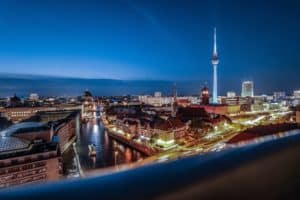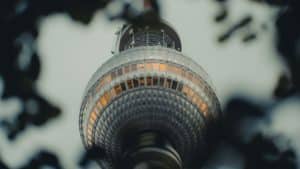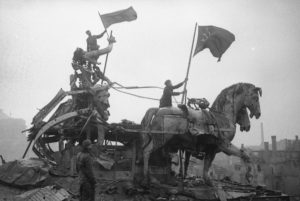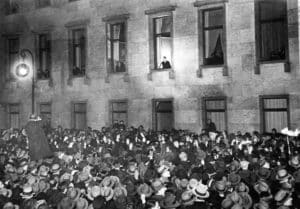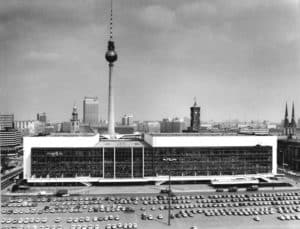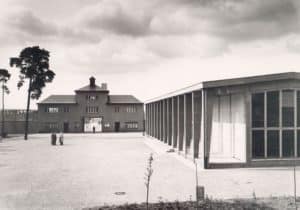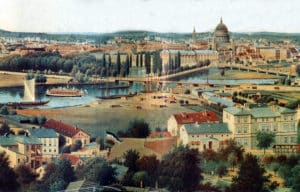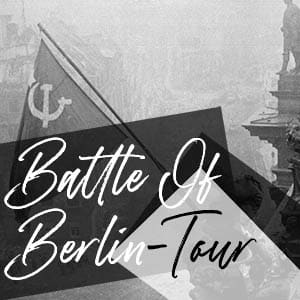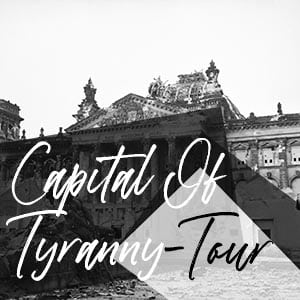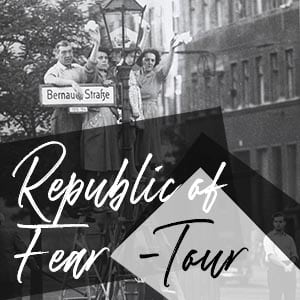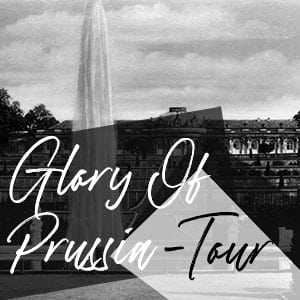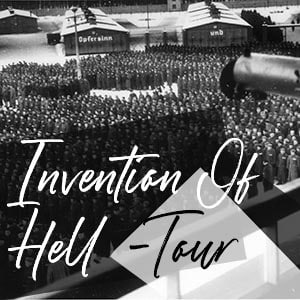Are you an expert on the history of Sachsenhausen?
Find out how much you know about the this Nazi concentration camp turned Soviet detention centre – now a memorial and museum 35km north of the German capital -with our 20 question quiz.
Each question is multiple choice and is presented with a 60 second timer – so you’ll have to check your memory rather than dive into the books.
When you have answered each question you will also get a small description of the correct answer – so you might even learn something new along the way. Your final score will be presented at the end of the quiz, as well as the option to share your results via Facebook or Twitter to challenge your friends.
If you end up stumped, don’t worry, you can join one of our Invention of Hell tours and brush up for the next attempt…

#1. Known for its unique design, the main area of Sachsenhausen is shaped like:
The camp perimeter of the main area of Sachsenhausen is an equilateral triangle with a semi circular roll call area centered on the main entrance gate in the boundary running northeast to southwest. The barracks houses (as seen in the picture above) were connected to this roll call area – with guards in Tower A provided with a clear line of sight to control the prisoners, if necessary, using a Maxim machine gun (also pictured).
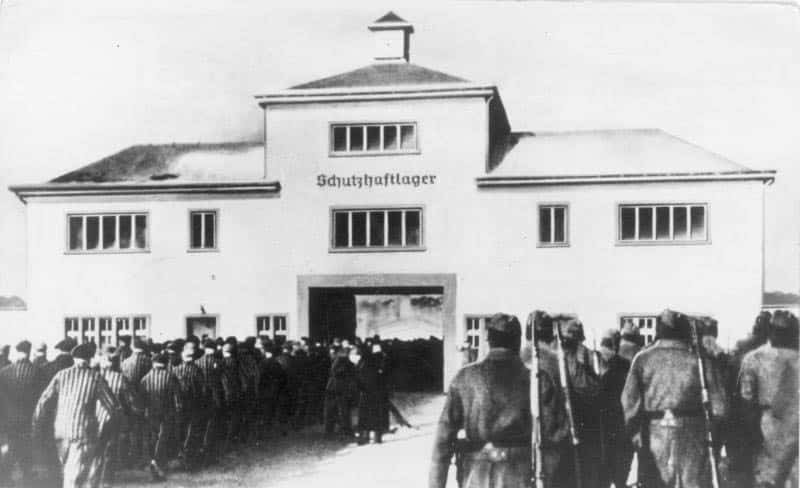
#2. What is the text visible on the entrance gate of the camp?
Almost all of the Nazi concentration camps had the words Arbeit Macht Frei (Work Makes Free or Work Sets One Free) on their entrance gates – the exception being Buchenwald, where the text Jedem Das Seine (to each his own) was visible instead.
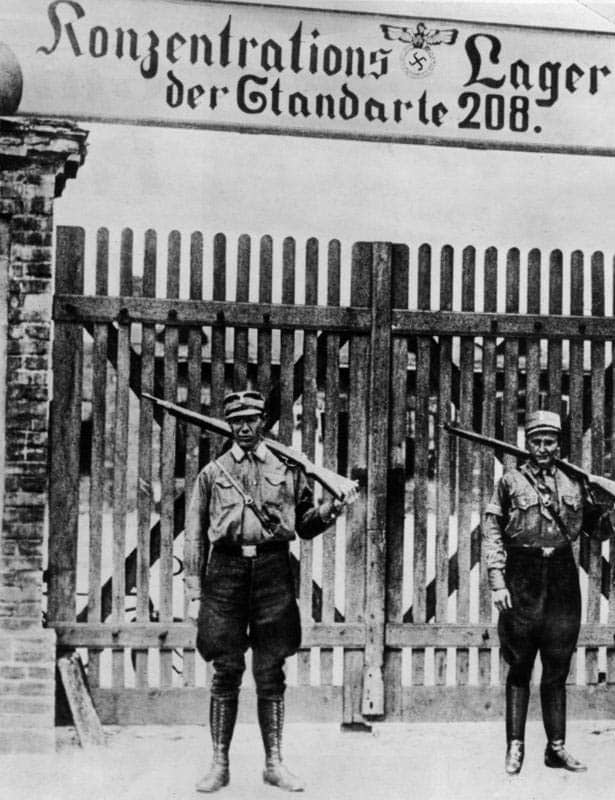
#3. The first camp constructed in Oranienburg in 1933 was inside what?
On 21 March 1933, the Day of Potsdam, on which Germany’s conservative elites bestowed their seal of approval on Hitler, the first state concentration camp in Prussia was set up by the local SA regiment, Standard 208, in a disused brewery in the centre of the town of Oranienburg.

#4. Which important sporting event was being held in Germany when Sachsenhausen opened?
Originally scheduled for the summer of 1916, the Games of the XI Olympiad – were eventually held in 1936. Known as the 1936 Summer Olympics, they would also be dubbed ‘the Nazi Games’, and coincide with the construction of the Sachsenhausen camp in August of that year.
#5. Which of these people was not imprisoned at Sachsenhausen?
Stalin’s son, the man who murdered German diplomat Ernst von Rath in 1938, and the man who almost assassinated Hitler one year later, would all be imprisoned at Sachsenhausen. Claus von Stauffenberg, part of the Walkyrie plot to kill Hitler in 1944 would be shot in the courtyard of the Bendlerblock German Army headquarters on July 21st 1944 – less than 24 hours after his attempt.
#6. Sachsenhausen was liberated by troops from the 1st Belorussian Front of the Soviet Red Army and soldiers from which country?
Troops of the Red Army and the Polish 2nd Infantry Division of Ludowe Wojsko Polskie would be responsible for the liberation of Sachsenhausen on April 22nd 1945.
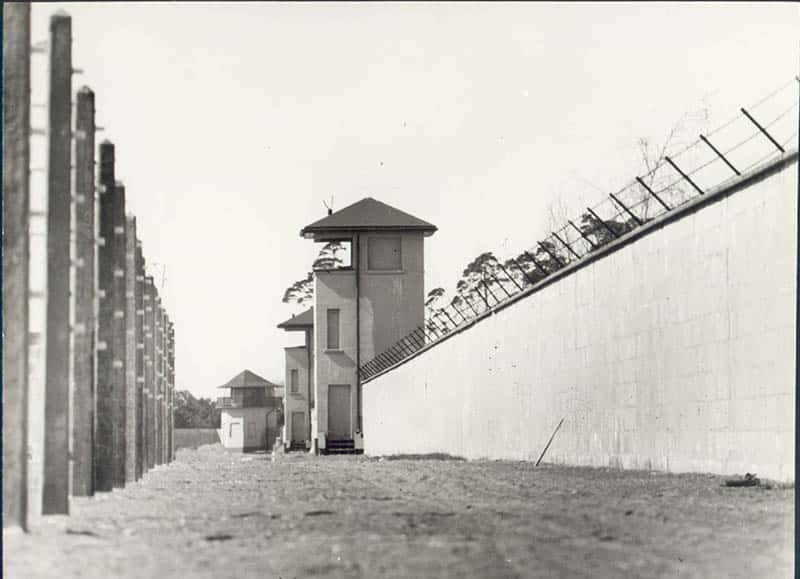
#7. What was Operation Bernhard?
Operation Bernhard was a counterfeiting operation, named after the man in charge of this project – SS Major Bernhard Krüger – to forge British bank notes. One of the largest currency counterfeiting operations ever recorded.

#8. The semi-circular track that separates the Appellplatz roll call area from the site of the camp barracks was used for what:
The track around the roll call area at Sachsenhausen was a boot testing track, where prisoners had to march over a variety of surfaces, to test military footwear; covering between 25 and 40km each day.
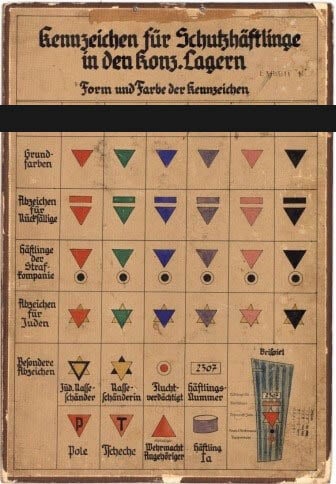
#9. Of the triangle identification system used in the Nazi concentation camps, which of these was used to identify Jehovah’s Witnesses.
The Purple triangle was used in concentration camps to identify Jehovah’s Witnesses – who would be referred to officially as ‘Bible Researchers’.

#10. Following Sachsenhausen’s transformation into NKVD special camp No.7, it was administered by commandant Roman Rudenko, who became internationally renowned for:
Roman Rudenko would serve as the chief Soviet prosecutor at the Nuremburg War trials.

#11. True or False: When Sachsenhausen was opened in 1961 by the East German government as a memorial, a statue designed by Käthe Kollwitz was added to the centre of the site:
FALSE: Berlin’s central Neue Wache, the Memorial for the Victims of War and Tyranny, now includes a statue designed by Käthe Kollwitz. When Sachsenhausen was opened in 1961 by the East German government, an obelisk was added to the centre of the camp as the new main memorial.

#12. True or False: Adolf Hitler attended the opening of the Sachsenhausen concentration camp?
FALSE: There is no evidence that Adolf Hitler ever visited any of the Nazi concentration camps. Oversight of the concentration camp industry fell to Heinrich Himmler, Reichführer SS.
#13. Beyond the main camp at Sachsenhausen there is a T-shaped building that served as what during the Nazi period?
The T building outside of the main Sachsenhausen site was used as the headquarters of the Concentration Camp Inspectorate from August 1938 until the end of the Second World War in 1945. Created by Theodor Eicke – commandant of Dachau – the CCI was the central SS administrative and managerial authority for the concentration camps of the Third Reich.

#14. What was the nickname given to the killing facility in the camp industrial yard?
The killing facility outside the main triangle at Sachsenhausen was known as Station Z. This was the name given by the SS to the building that contained four cremation ovens, a gas chamber, with an adjacent firing squad area. The use of the last letter of the alphabet being a cynical reference to the last station in the life of a prisoner.
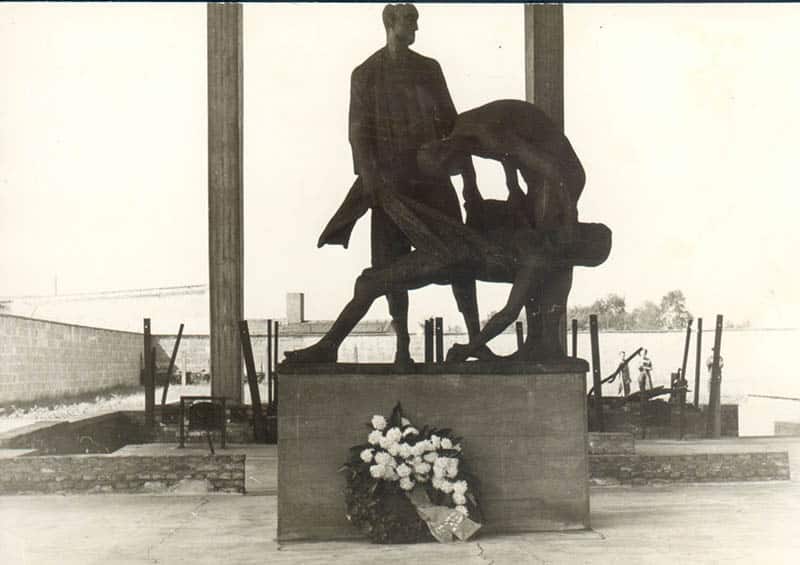
#15. The largest mass murder operation at Sachsenhausen involved which group of prisoners:
In September 1941, around 13,000 Soviet Prisoners were murdered at Sachsenhausen – around 10,000 were executed in the camp by being shot in the back of the neck through a hidden hole in a wall.

#16. True or False: a camp brothel was established in the Sachsenhausen camp in 1942?
TRUE: One of the lesser known aspects of concentration camp life is that some brothels (Lagerbordell) were established in 10 Nazi camp to create an incentive for prisoners to collaborate and perform better. The women forced into these brothels came mainly from the Ravensbrück concentration camp, except for Auschwitz, which employed its own prisoners.
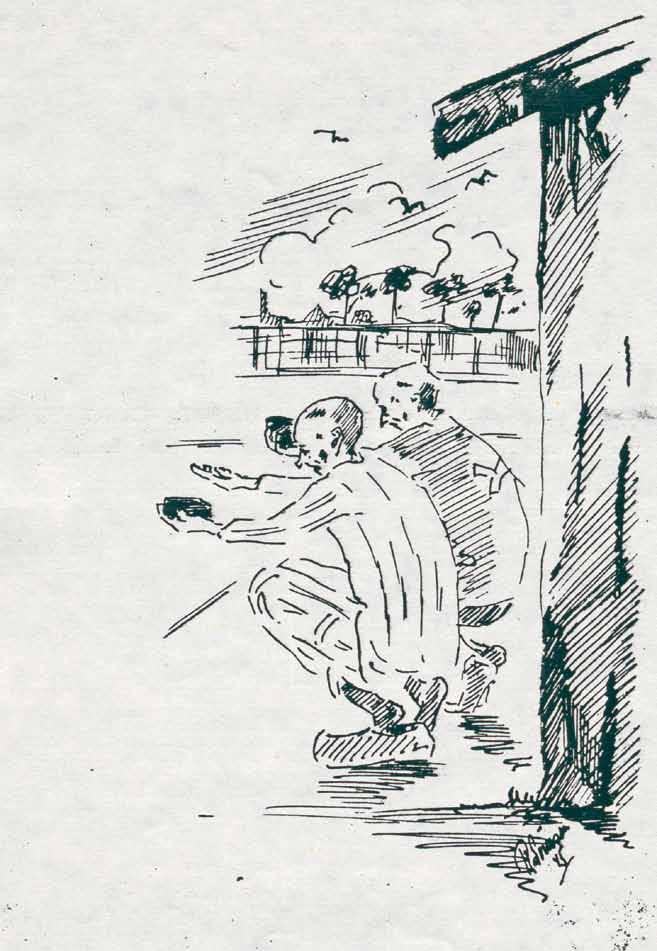
#17. Prisoners in Sachsenhausen were sometimes punished by being forced into this position known as:
Punishments at Sachsenhausen could be harsh, with some prisoners required to assume the “Sachsenhausen Greeting” – where a prisoner would squat with his arms outstretched in front for an extended period of time.
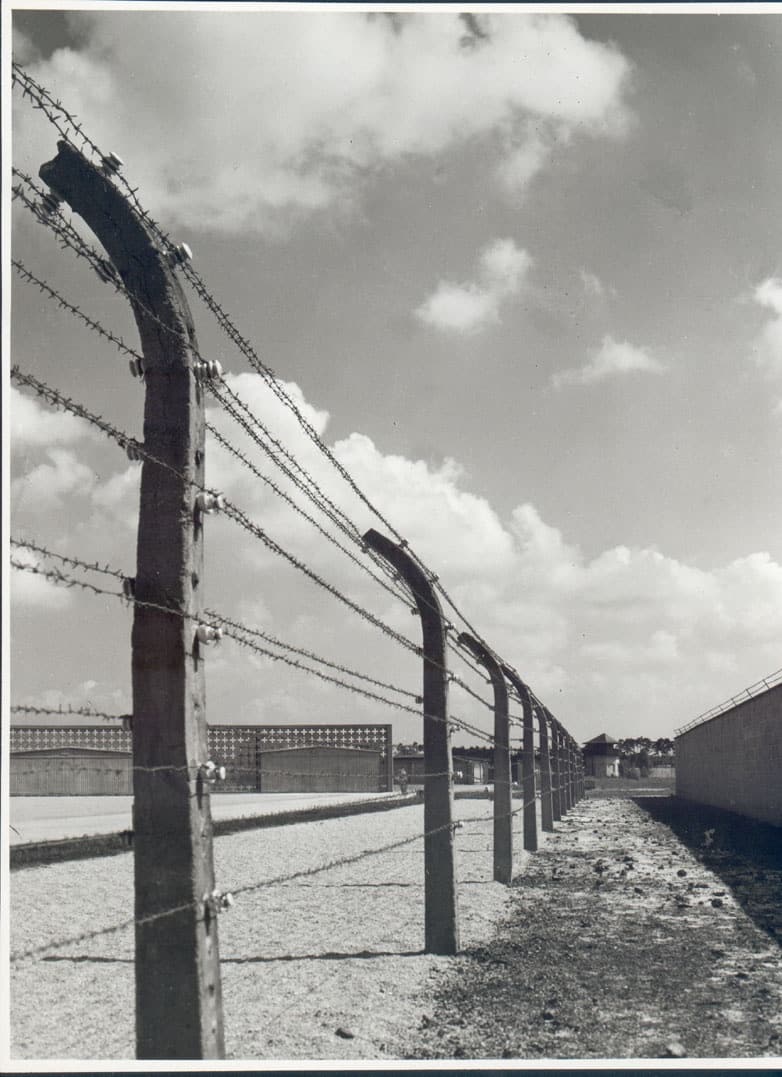
#18. Which of these German companies did NOT employ slave labour from Sachsenhausen?
AEG, Siemens, and Heinkel all employed slave labour at Sachsenhausen. There is no evidence that ADIDAS was involved at Sachsenhausen.

#19. True or False: East German couples would visit the Sachsenhausen Memorial on their wedding days to lay flowers?
TRUE: As bizarre as it may sound, East German coupled did regularly visit the Sachsenhausen memorial and lay flowers for the Unknown Concentration Camp inmate at the base of the Obelisk (added by the East German government as a main memorial).

#20. In March 1945, more than 600 US bombers attacked Oranienburg intending to destroy what?
In March 1945, the United States targetted the Auer-Werke in Oranienburg – one of the most important sites in Europe for the Nazi nuclear bomb programme. The military leader for the American ‘Manhattan Project’, General Leslie R. Groves, wrote in his memoirs: “One target of particular importance to us – the Auer-Gesellschaft works at Oranienburg, north of Berlin – where thorium and uranium metals were being produced on a large scale – was in the future Russian zone. These materials were both to be used for the generation of atomic energy and were therefore probably for the production of an
atomic bomb. Since we did not have even the remotest possibility to seize the Auer-Werke, I recommended to General
General Marshall to destroy them from the from the air.”
Results
Not bad. Not bad at all!
It seems you can easily claim to be an expert on the history of Sachsenhausen
Perhaps a career as a tour guide or local historian awaits?
If you’re looking to learn more, consider one of our Invention of Hell tours – exploring the Sachsenhausen Memorial and Museum site.
Oh no, you managed less than 90%.
Don’t worry, the questions were meant to be hard.
Next time you’re heading to Berlin make sure to check out our history tours, where you’re guaranteed to learn more about the history of Nazi Germany and the Cold War era as it relates to Sachsenhausen. Specifically our Invention of Hell tour might be just what you are looking for – exploring the Sachsenhausen Memorial and Museum site.
Our Related Private Tours
Learn more about the Battle of Berlin and explore this urban battlefield with our Battle of Berlin tours.
Learn more about the history of Nazi Germany and life in Hitler’s Third Reich with our Capital Of Tyranny tours.
Learn more about the history of East German and life behind the Iron Curtain with our Republic Of Fear tours.
Learn more about the history of Prussia and the life of Frederick the Great with our Glory Of Prussia tours.
Learn more about SS ‘Protective Custoday’ on our Sachsenhausen Concentration Camp Memorial tours.





